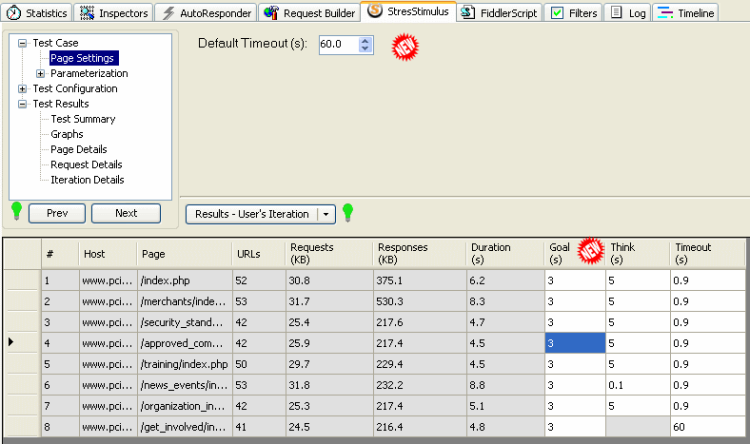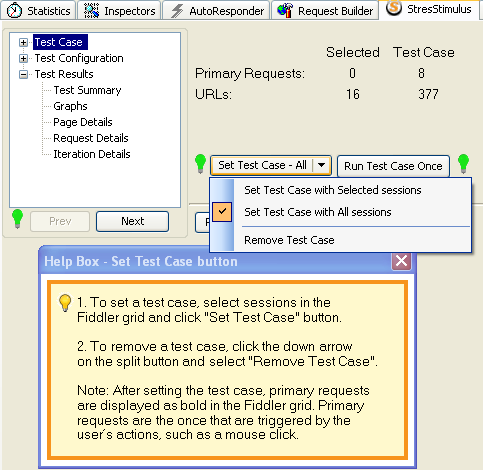Several features are added to enhance setting and configuring test cases.
1. More Page Settings. Added a number of columns in the Page Settings grid. Added support for page response time goal.

The table below describes all Page Settings grid's columns. New in this release, columns are shown in blue.
Header
|
Description
|
#
|
The page number
|
Host
|
The page host
|
Page
|
The page path
|
URLs
|
The number of the page requests
|
Requests (KB)
|
The size of the page primary and all dependent requests
|
Responses (KB)
|
The size of the page primary and all dependent responses
|
Duration (s)
|
The page response time for requesting and downloading all requests, excluding the ones downloaded after the page is completed
|
Goal (s)
|
The page response time goal
|
Think (s)
|
The think time, a delay before requesting the next page to reflect user's wait time
|
Timeout (s)
|
The maximum amount of time for receiving any of the page requests, after which a timeout error is registered
|
2. Configuring Default Page Timeout.An option to change default timeout for all pages is added, so that users don't have to change it for each primary request. Custom timeouts will be preserved.
3. More Set/Remove Test Case options. Added an option to create a test case with all sessions. This allows to avoid a slow operation of selecting sessions in Fiddler. Added an option to Remove Test Case in the Set Test Case button drop-down menu.

Menu item
|
Function
|
Set Test Case with Selected sessions
|
Set a new test case with selected sessions from the Fiddler grid
|
Set Test Case with All sessions
|
Set a new test case with all sessions from the Fiddler grid
|
Remove Test Case
|
Remove the existing Test Case
|
4. Command line and scheduling.Launch a load test from command line;
Fiddler.exe /SS [/quiet ] <File.ssconfig>
where:
File.ssconfigis a StresStimulus test configuration file. Specify a full path or the default directory
/Fiddler/StresStimulus will be used.
/quietis a switch to run Fiddler in quiet mode.
To schedule a load test, add the same command line to a task scheduler.
5. Supporting more formats in .CSV file.
- To permit using special characters, support for URL encoding is added. To insert a character with hexadecimal code XX, add the %XX sequence to .csv file. In rare cases, when %XX should be interpreted as a 3-character string, URL-encode the percent character, so the string will look like %25XX
- The coma character will no longer be reserved just for a field separator, and can be used within values. To include a coma character within values, surround it with the double-quotes.
6. Increasing accuracy and simplify handling test cases.
- More accurate primary/depended requests recognition when setting a test case.
- When recording a test case, it is no longer required to wait 5 seconds between clicks after a previous page is loaded.
Read other blogs about this release: